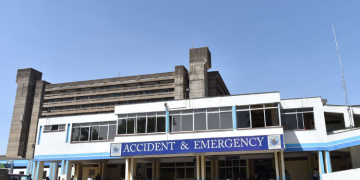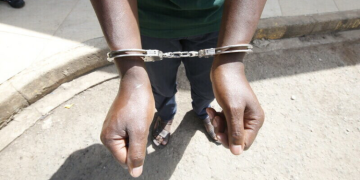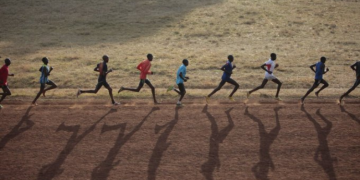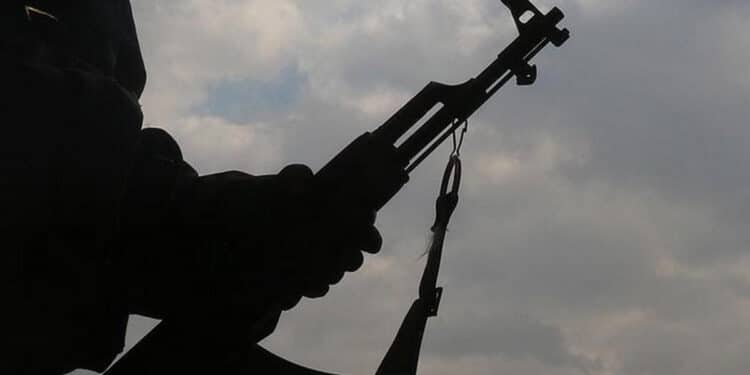President William Ruto on July 9, 2025, directed police officers to shoot protesters targeting businesses, police stations, or attacking law enforcement in the legs, arguing that doing so would incapacitate but not kill. However, medical experts warn that a gunshot wound to the leg can still be fatal under certain circumstances.
While the directive aims to avoid fatalities, a bullet wound to the leg can have deadly consequences depending on where the bullet lands.
Speaking to The Kenya Times, Dr Masini Aaron, an orthopaedic surgeon, explains that in common language, the term “leg” often refers to the entire lower limb—from the gluteal region, hip, and thigh to the knee, shin, and foot.
However, anatomically, it refers specifically to the portion of the limb between the knee and the ankle.
He goes on to note that, in cases of ballistic injuries—wounds caused by projectiles—the extremities (arms and legs) are the most common sites for non-fatal gunshot wounds.
However, that doesn’t negate the chances of fatality owing to other complications such as exsanguination (severe loss of blood) or infection.
Dr Aaron Masini Explains Why Being Shot in the Leg Can Be Fatal
Dr Masini points out that gunshot wounds (GSWs) are considered high-energy injuries and can result in extensive soft tissue damage and fractures. He adds that Velocity is one of the several factors that determine the extent of damage caused by a bullet.
“There are low-velocity firearms like handguns and high-velocity ones such as rifles; shotguns fall somewhere in between,” he explains.
“The other contributing factors are the shape, weight, diameter, jacketing and tumbling characteristics of the bullets as well as the target characteristic.”
When a bullet strikes human tissue, he adds- three major things happen: mechanical crushing that forms a permanent cavity, elastic stretching of surrounding tissues caused by the bullet’s kinetic energy (creating a temporary cavity), and a shock wave that may damage tissues far from the bullet’s path.
“A temporary vacuum may also form, sucking in foreign material and increasing the risk of infection,” Dr Masini notes.
He adds that the damage caused depends not just on the bullet’s energy on impact but also on its behavior inside the body.
“Tumbling bullets cause more destruction. Bullets can cause secondary missiles when they contact dense objects such as belts, buttons, bone etc. These secondary missiles can cause significant damage and addition al permanent cavities,” he said.
The Danger of Severed Blood Vessels
One of the gravest dangers of a gunshot wound to the leg is vascular damage, particularly to the femoral artery—the main blood vessel supplying the lower limb.
Dr Masini explains that the femoral artery, a continuation of the external iliac artery, runs through the thigh and continues as the popliteal artery behind the knee. Below the knee, it branches into the anterior tibial artery, posterior tibial artery, and peroneal artery.
“There is paucity of data on this specific type of injury, however following other types of injuries where the femoral artery was transected, the time to fatal exsanguination was within 10min,” he noted.
The orthopedic surgeon emphasized that all vessels are essentially at risk in the lower limb with regards to ballistic injuries. However, he said the femoral artery injuries pose a life-threatening risk.
“It carries a large fraction of blood, and it is under high pressure. In particular regions such as the upper thigh, it lacks surrounding muscles to compress it when severed,” he stated.
On his part, Kenya Medical Association (KMA) President, Dr Simon Mucara Kigondu, supports Dr Masini’s explanation that a bullet can rupture the femoral artery—a major blood vessel in the thigh.
Once severed, the injured person can go into shock and die within minutes from massive blood loss, a condition known as hemorrhagic shock.
“If a bullet severs the femoral or popliteal artery, a person can bleed out in minutes,” said Dr. Kigondu.
“The femoral artery carries a large volume of blood—nearly the entire blood supply passes through the leg in just one minute.”
“So, if the artery is hit, he explains it can result in rapid and severe blood loss,” he stated.
Also Read: Why an Autopsy is Conducted Even When Cause of Death Seems Obvious- Experts
Neurovascular Complications
While GSWs to the leg may seem less serious, they can lead to permanent disability or even death.
“A bullet can damage major blood vessels like the femoral artery or cause complications such as compartment syndrome, infection, or fractures,” says Dr Masini.
When a bullet strikes bone—particularly a major long bone like the femur—the consequences can be severe. As a major long bone, he says- its blood supply falls within that range.
However, it cannot be viewed in isolation because the energy dissipated by a striking bullet damage surrounding structures.
He further explains that the femur receives 5–10% of cardiac output, and a shattered femur signifies the dissipation of massive energy.
“It being shattered reflects a massive amount of energy dissipated which will significantly lower survival chances.”
A study published in the Australasian Emergency Nursing Journal found that gunshot wounds to the leg can lead to severe neurovascular complications.
The study noted that such wounds produce high-velocity injuries and are associated with numerous potential complications, including bone fractures, vascular and nerve injuries, soft tissue destruction, compartment syndrome, delayed wound healing, risk of infection, and various psychosocial issues.
Dr Masini lists several complications that can arise when a bullet fractures a leg bone, including neurovascular injury (damage to arteries, veins, and nerves), devitalization of surrounding soft tissue such as muscle, infection, retained foreign bodies, and lead toxicity—particularly if bullet fragments are lodged in joints such as the hip, knee, or ankle.
Also Read: Ruto Orders Police to Shoot Kenyans in the Leg
Infection and Sepsis: The Silent Threat
On his part, Dr. Kigondu explains that a shattered bone can cause excruciating pain, and if it becomes infected, the victim could die from sepsis.
Sepsis occurs when an infection—such as one resulting from a wound, surgery, or illness—spreads throughout the body, triggering an extreme immune response.
This overreaction can lead to severe complications, including organ failure or death, if not treated promptly.
“Immobility after a gunshot injury can lead to a blood clot, which may result in sudden death,” he added.
Dr Masini explains that infection, and subsequently sepsis, is not caused by the bullet itself, but rather by foreign material being sucked into the wound, devitalisation of soft tissue, and retained foreign bodies—including bullet fragments.
“The few studies I’ve come across quote infection rates between 8% and 16% among civilians,” he notes.
As for sepsis, which can occur when deep soft tissue or bone infections allow bacteria to enter the bloodstream, Dr Masini says there are no large-scale studies that specifically quantify sepsis rates after lower-limb gunshot wounds.
“However, rates of less than 1% have been reported—though this likely underestimates the actual risk,” he cautions.
Follow our WhatsApp Channel and X Account for real-time news updates.
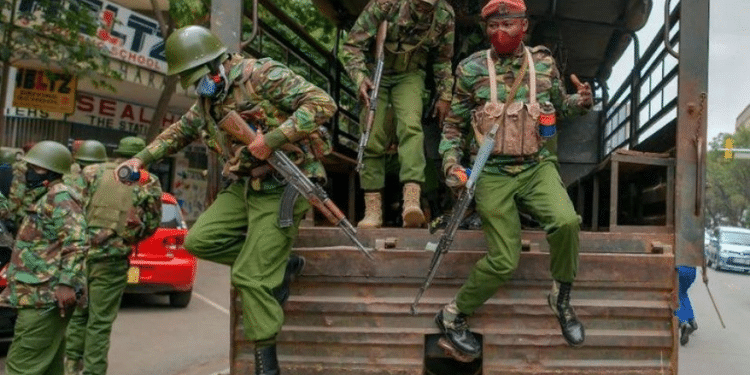





![President Ruto Address During Mashujaa Day And How He Honored Raila [Full Text Speech] President Ruto Address During Mashujaa Day And How He Honored Raila [Full Text Speech]](https://thekenyatimescdn-ese7d3e7ghdnbfa9.z01.azurefd.net/prodimages/uploads/2025/10/ruto-mashujaa-address-360x180.jpg)


















